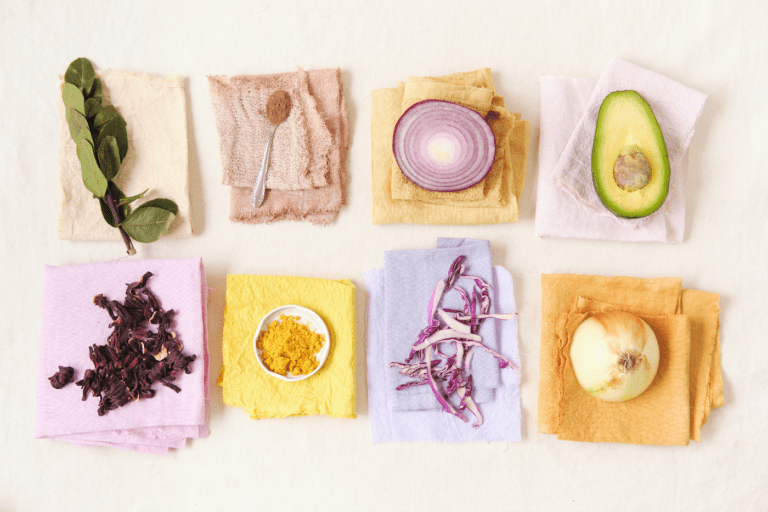Sustainable cooking isn’t just a culinary choice; it’s a powerful way to create mouthwatering dishes while nurturing our planet.
Worried about the time it takes or the convenience factor? We get it. But here’s the catch: Sustainable cooking isn’t as complicated as it sounds. It’s a win-win for your taste buds and the environment.
Join us as we uncover 6 game-changing tips for sustainable cooking, making it easy, delicious, and oh-so-satisfying.
What Exactly is Sustainable Cooking?
Read more in-depth info on this topic under WHAT IS SUSTAINABLE LIVING? EXPLAINED WITH 5 EASY EXAMPLES
Sustainable cooking revolves around choosing locally sourced, seasonal ingredients to reduce the environmental impact of food production and transportation. It also emphasizes minimizing kitchen waste through creative use of leftovers and adopting energy-efficient cooking practices. In essence, it’s a mindful approach that considers both the health of individuals and the well-being of the planet. 🌍🍽️✨
Why Opt for Sustainable Cooking?
Sustainable cooking is a conscious decision that brings a multitude of benefits to your life and the world around you. Here’s why making this choice is a win-win:
1. Nourishing Your Body:
- Quality Ingredients: Opt for fresh, organic vegetables and fruits from your local farmer’s market, ensuring you’re getting the highest quality and nutritional value in your meals.
- Healthier Cooking Techniques: Use methods like steaming, grilling, or sautéing, which preserve nutrients better than deep frying.
2. Caring for the Environment:
- Reduced Waste: Get creative with leftovers! For example, use vegetable scraps to make a flavorful broth or transform last night’s roasted veggies into a tasty salad.
- Lower Carbon Footprint: Choose to buy seasonal and locally sourced produce to minimize the carbon emissions associated with long-distance transportation.
3. Supporting Local Communities:
- Local Farmers and Producers: Visit farmers’ markets or join a local CSA (Community Supported Agriculture) program to directly support nearby farmers and producers.
- Preserving Culinary Heritage: Explore traditional recipes and use locally grown herbs and spices to keep culinary traditions alive.
4. Promoting Animal Welfare:
- Ethical Animal Husbandry: Buy free-range eggs or grass-fed meat, supporting ethical practices where animals are treated humanely and raised in natural conditions.
5. Financial Savings:
- Reduced Food Waste: Turn stale bread into croutons or use overripe fruits in smoothies, minimizing food waste and stretching your grocery budget.
- Plant-Based Alternatives: Incorporate beans, lentils, and grains into your meals; they’re affordable, nutritious, and eco-friendly.
6. Personal Fulfillment:
- Connecting with Food: Grow your own herbs or start a small vegetable garden, allowing you to connect with the food you consume and appreciate its journey.
- Conscious Decision Making: Each time you choose to cook sustainably, you’re making a conscious decision to positively impact your health, community, and the planet.
Making sustainable choices in the kitchen is about enjoying delicious meals while being mindful of their impact on your health, community, and the environment. Let’s savor the joy of sustainable cooking and relish the positive change it brings to our lives.

The 6 Amazing Tips to Ace Sustainable Cooking
1. Reduce Food Waste
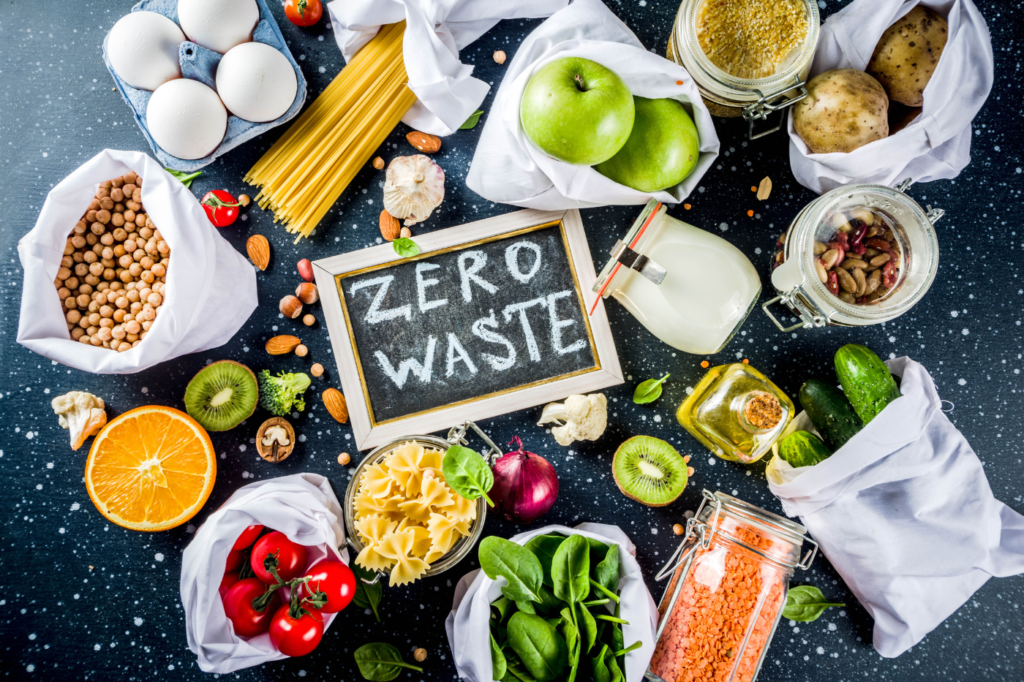
Smart Meal Planning:
How can meal planning minimize food waste during cooking?
- Plan Ahead: At the start of the week, plan your meals, considering the ingredients you already have. For instance, if you have vegetables, plan a stir-fry or a salad to use them up.
- Use Shopping Lists: Before heading to the store, make a shopping list based on your meal plan. Stick to the list to avoid buying unnecessary items that might go to waste.
- Batch Cooking: Prepare a big batch of a versatile base like quinoa, which you can use in various dishes throughout the week. It saves time and minimizes ingredient wastage.
Proper Portioning: What techniques help in portioning food accurately to avoid excess?
Portioning your food accurately is a fundamental aspect of sustainable cooking, preventing unnecessary waste while ensuring you have enough to satisfy your hunger. Here’s how you can master this art:
Techniques for Proper Portioning:
- Understand Recommended Portions:
- Familiarize yourself with standard portion sizes for various food groups, like fruits, vegetables, proteins, and grains, to ensure a balanced meal without excess.
- Practice Mindful Plating:
- Visualize your plate divided into sections for proteins, vegetables, and grains. Allocate space according to portion guidelines, avoiding overcrowding and ensuring a balanced diet.
Examples:
- When serving grains like rice or pasta, use a measuring cup to portion a recommended single serving, typically around ½ to 1 cup, depending on your dietary needs.
- For proteins like meat, a portion should be about the size of your palm or a deck of cards.
- Fill half your plate with vegetables, a quarter with protein, and a quarter with grains for a well-portioned, nutritious meal.
Creative Leftover Management: How can I creatively use leftovers to prevent wastage?
Creative leftover management is the key to reducing food waste and discovering new flavors from your previous meals. Let’s explore some innovative ways to give leftovers a delightful makeover:
Techniques for Creative Leftover Management:
- Meal Remix:
- Transform leftovers into a new dish. For instance, yesterday’s roasted vegetables can become a hearty vegetable soup.
- Freeze for Later:
- Freeze leftover soups, stews, or cooked grains in portion-sized containers. Thaw and reheat for a quick, satisfying meal on busy days.
- Batch Cooking:
- Plan meals to generate intentional leftovers. Cook extra portions that can be used for lunches or dinners throughout the week, saving time and reducing waste.
Examples:
- Leftover Roasted Veggies: Transform them into a flavorful veggie frittata for breakfast or a tasty filling for wraps and sandwiches.
- Leftover Rice: Utilize it to make fried rice with added veggies and proteins like tofu or chicken.
- Leftover Chicken: Shred it and turn it into a delicious chicken salad with some fresh vegetables and a light dressing.
2. Cook Energy-Efficiently

Cooking efficiently not only saves energy but also contributes to a sustainable kitchen. Let’s explore some techniques that can help you reduce your carbon footprint while savoring delicious meals:
Induction Cooking:
How does induction cooking save energy while cooking?
Induction cooking is a modern, energy-efficient method that uses electromagnetic fields to directly heat the cookware. Here’s how it helps in saving energy:
- Direct Heat Transfer:
- Induction cooktops heat the pan directly through electromagnetic induction, heating up quickly and wasting less energy compared to traditional stovetops.
- Precision and Control:
- The ability to precisely control the temperature ensures that only the required amount of energy is used for cooking, reducing unnecessary energy consumption.
Examples:
- Boiling Water: Induction cooktops can boil water in nearly half the time of a traditional electric stovetop, saving both time and energy.
- Instant Temperature Adjustment: The immediate response to adjustments in temperature means your food gets cooked faster with less energy.
Slow Cooking Methods:
What are some slow-cooking techniques that save energy and enhance flavors?
Slow cooking methods, besides enhancing flavors, are energy-efficient and ideal for tenderizing meats and developing rich flavors:
- Crockpot/Slow Cooker:
- Slow cookers use low, consistent heat over an extended period, saving energy compared to conventional oven cooking.
- Pressure Cooker:
- Pressure cookers can significantly reduce cooking time and energy consumption by using high pressure to cook food quickly.
Examples:
- One-Pot Meals: Using a slow cooker or pressure cooker for one-pot meals like stews, soups, or roasts can save both time and energy.
Efficient Use of Oven and Microwave:
How can I optimize oven and microwave use to reduce energy consumption?
Both ovens and microwaves can be used efficiently to save energy and speed up cooking:
- Microwave Use:
- Microwaves use less energy and cook food faster than conventional ovens, especially for reheating or defrosting.
- Efficient Oven Use:
- Use the oven for larger meals or multiple dishes at once to maximize its use and minimize the frequency of operation.
Examples:
- Microwave Reheating: Use the microwave to reheat leftovers or pre-cooked meals instead of the oven to save energy.
- Batch Baking: Bake multiple dishes at once in the oven, optimizing its use and reducing the overall energy consumption.
3. Source Sustainable Ingredients + Opt for Plant-Based Protein
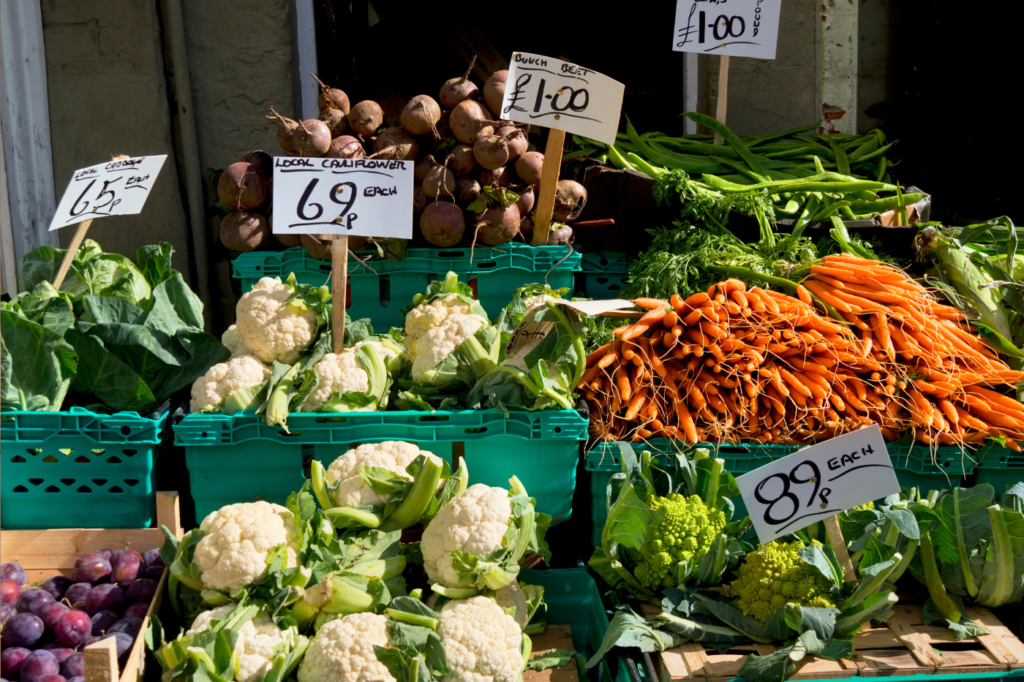
Buying Local and Seasonal Produce:
- Frequent Farmers’ Markets: Visit local farmers’ markets to purchase fresh, seasonal produce directly from farmers. You’ll reduce the carbon footprint associated with long-distance transportation.
- Join a CSA (Community Supported Agriculture): Consider joining a CSA program where you receive a regular share of locally grown produce, fostering a connection with the community and supporting local farmers.
- Understand Seasonal Cycles: Familiarize yourself with the seasonal availability of different fruits and vegetables in your region. Plan your meals accordingly to include what’s in season.
Choosing Responsibly Sourced Proteins:
- Look for Certifications: Opt for proteins with certifications such as “MSC” (Marine Stewardship Council) for sustainable seafood or “Certified Humane” for responsibly raised meat.
- Research Brands: Investigate brands that prioritize sustainable sourcing practices and ensure they adhere to ethical and environmentally friendly standards.
- Know Your Labels: Understand food labels and terms like “grass-fed,” “pasture-raised,” or “wild-caught” to make informed decisions about the sourcing of your proteins.
Plant-Based Options:
- Explore Legumes: Incorporate beans, lentils, chickpeas, and other legumes into your meals for a rich source of protein that’s eco-friendly and budget-friendly.
- Try Alternative Proteins: Experiment with plant-based protein alternatives like tofu, tempeh, seitan, and edamame to diversify your protein intake and reduce your ecological footprint.
Read more in-depth info on this topic under WANNA KNOW THE 9+ MOST SUSTAINABLE PROTEIN SOURCES? NO. 1 WILL SURPRISE YOU!
These tips aim to guide you in sourcing sustainable ingredients and incorporating plant-based protein into your diet. Making conscious choices while shopping and embracing a variety of plant-based options will not only benefit your health but also contribute to a more sustainable and eco-conscious way of cooking.
4. Use Eco-Friendly Cookware and Utensils
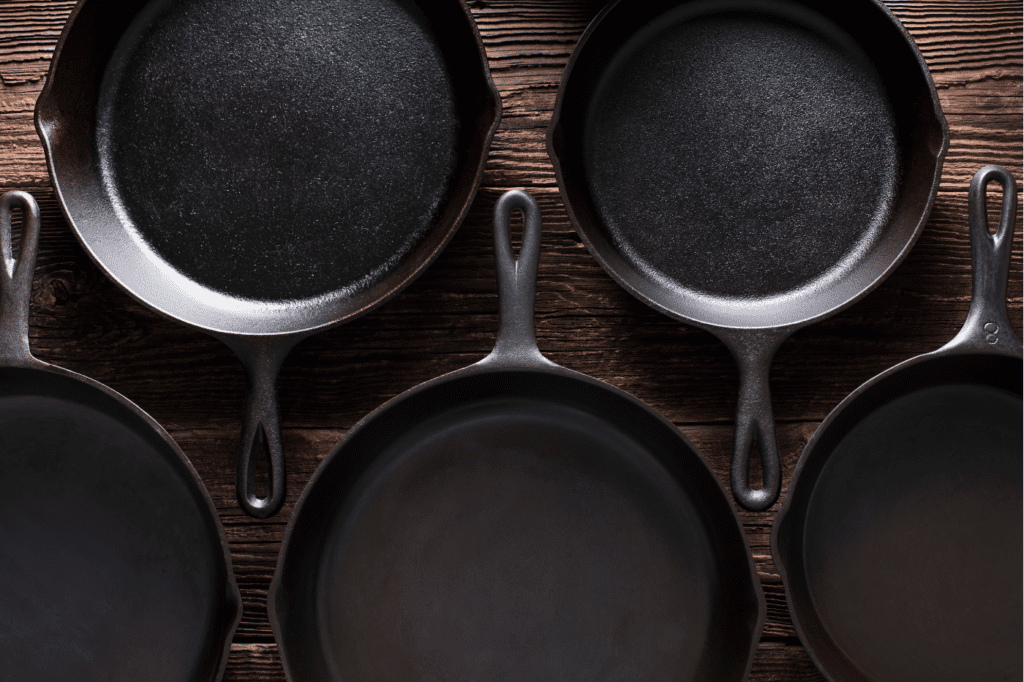
Opting for Recycled and Sustainable Materials:
- Choose Bamboo Utensils: Bamboo is a renewable resource and makes excellent utensils due to its durability and sustainability. Look for FSC (Forest Stewardship Council) certified bamboo products.
- Consider Cast Iron Cookware: Cast iron is long-lasting and can be recycled. Additionally, its excellent heat retention properties reduce energy usage during cooking.
- Explore Stainless Steel: Stainless steel cookware is durable, recyclable, and can last a lifetime, making it an eco-friendly choice for your kitchen.
The Top 10 Sustainable and High-Quality Kitchenware Brands:
- Lodge: Known for its cast iron skillets, Lodge emphasizes durability and sustainability in its manufacturing processes.
- GreenLife: This brand produces non-stick cookware with a ceramic coating that is free from PFAS, PFOA, lead, and cadmium.
- Bambu: Bambu creates eco-friendly utensils and cutting boards made from bamboo, offering sustainable alternatives for your kitchen.
- Caraway: Caraway’s cookware is made with responsibly sourced materials and is designed for long-lasting durability, reducing the need for frequent replacements.
- Made In: Known for its quality stainless steel cookware, Made In focuses on ethical manufacturing and durability, promoting a sustainable approach to kitchenware.
- Our Place: This brand offers versatile, multi-purpose cookware designed with sustainability in mind, aiming for reduced waste and better longevity.
- Material Kitchen: Material produces high-quality kitchen essentials made from recycled stainless steel, making it a sustainable choice for conscious cooks.
- Xtrema: Xtrema offers ceramic cookware made from natural materials that are free from heavy metals, lead, cadmium, and toxic PFOA and PTFE.
- Lékué: Lékué creates eco-friendly silicone cooking utensils that are durable, safe, and recyclable.
- Bioexcel: Known for its energy-efficient cookware made from recycled aluminum, Bioexcel focuses on sustainability without compromising on performance.
These tips aim to guide you in selecting eco-friendly cookware and utensils, emphasizing materials and reputable brands that prioritize sustainability. By opting for kitchenware made from recycled and sustainable materials, you contribute to a more environmentally friendly and responsible kitchen.
5. Minimize Water Usage

Conscious Water Usage During Food Preparation:
- Prepare Ingredients Mindfully: Fill a bowl with the necessary amount of water to wash and soak fruits and vegetables instead of letting the tap run continuously.
- Reuse Cooking Water: After boiling vegetables or pasta, allow the water to cool and then use it to water your plants or garden.
- Consider Steaming: Opt for steaming rather than boiling. Steaming uses less water while retaining nutrients in the food.
Efficient Dishwashing Practices:
- Scrape Before Washing: Scrape food residue off plates and utensils before washing. This reduces the need for excessive rinsing.
- Utilize Dishwasher Efficiently: Wait until you have a full load before using the dishwasher to maximize its efficiency and reduce water wastage.
- Soak and Scrub: If you wash per hand, fill one side of the sink with soapy water for washing and the other with plain water for rinsing. Rather than letting the tap run continuously.
These tips aim to guide you in minimizing water usage during food preparation and dishwashing. By being conscious of water usage and implementing efficient practices, you contribute to conserving this precious resource while maintaining a sustainable and eco-conscious approach in your kitchen.
6. Cultivating a Zero-Waste Kitchen
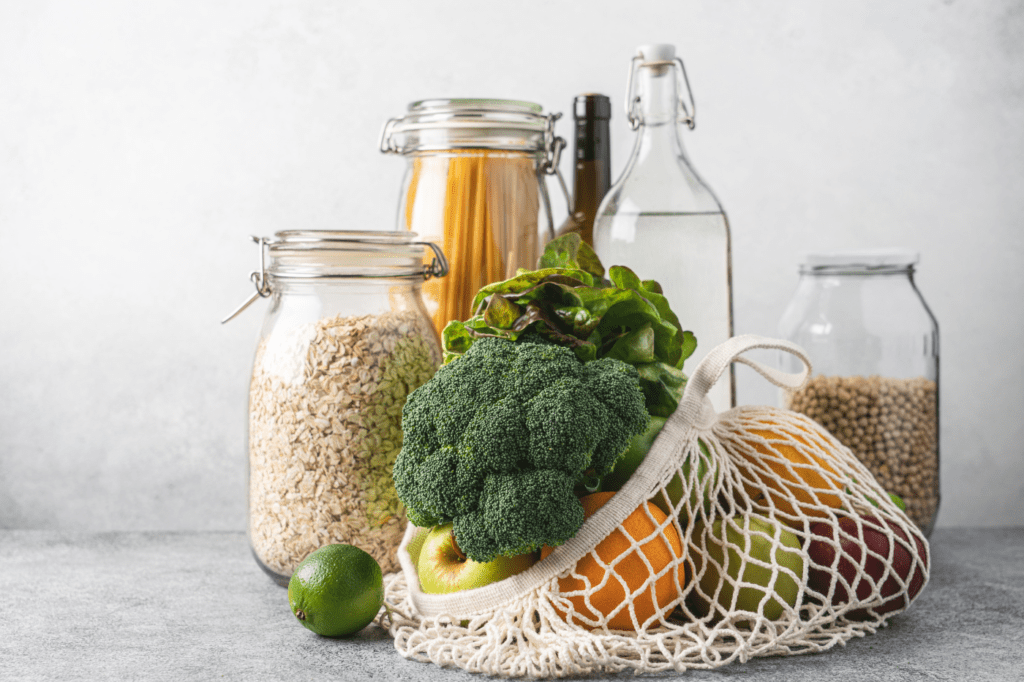
How can I reduce single-use plastics in my kitchen?
- Opt for Reusable Containers: Use reusable glass or silicone containers instead of disposable plastic ones for storing leftovers or packing meals.
- Ditch Plastic Wrap: Swap plastic wrap with reusable beeswax wraps or silicone lids to cover bowls and leftovers without generating plastic waste.
- Use Cloth Bags: Replace plastic produce bags with reusable cloth bags for purchasing fruits, vegetables, and bulk items.
Top 10 Zero-Waste Products for Your Kitchen:
- Beeswax Wraps: These reusable wraps are made from cotton and coated with beeswax, providing an eco-friendly alternative to plastic wrap.
- Reusable Produce Bags: Invest in mesh or cloth produce bags to eliminate the need for single-use plastic bags when shopping for fresh produce.
- Silicone Food Storage Bags: These reusable, airtight bags are perfect for storing food, reducing the need for disposable plastic bags.
- Stainless Steel Straws: Carry your own reusable stainless steel straws to avoid using plastic ones when enjoying drinks.
- Bamboo Cutlery Set: Carry a portable bamboo cutlery set to reduce plastic utensils when eating on the go.
- Reusable Coffee Filters: Switch to reusable coffee filters for your drip coffee maker instead of disposable paper filters.
- Compost Bin: Keep a compost bin in your kitchen to divert organic waste from landfills and turn it into nutrient-rich compost.
- Dish Washing Brushes: Opt for brushes with replaceable heads or made from sustainable materials to reduce waste from disposable scrubbers.
- Reusable Dishcloths: Use washable, reusable dishcloths instead of disposable paper towels for cleaning and wiping.
- Food Storage Containers with Lids: Choose a set of durable, airtight food storage containers to keep your pantry items fresh and free from plastic packaging.
Bulk Buying and Zero Packaging:
Tips for bulk buying and zero-packaging shopping for sustainable cooking.
- Bring Your Own Containers: Carry reusable containers, jars, or cloth bags to the store for filling with bulk items like grains, legumes, and spices.
- Weigh Containers Before Filling: Weigh your empty containers before filling to subtract the weight of the container from the total weight of the item, ensuring accurate pricing.
- Explore Zero-Waste Stores: Seek out stores that specialize in bulk buying and zero packaging, where you can find a wide variety of pantry staples without unnecessary packaging.
These tips aim to guide you in cultivating a zero-waste kitchen, offering solutions to reduce single-use plastics and introducing sustainable, zero-waste products. By incorporating these practices and products into your kitchen routine, you’ll contribute to minimizing waste and adopting a more sustainable and eco-friendly lifestyle.
FAQs: Everything You Wondered About Sustainable Cooking
Q1: What exactly is sustainable cooking?
A1: Sustainable cooking involves utilizing practices that minimize the impact on the environment, support local communities, and prioritize the ethical treatment of animals. It entails using locally sourced, seasonal, and organic ingredients, reducing food waste, and making eco-conscious choices in kitchen habits.
Q2: How can I start cooking sustainably on a budget?
A2: Cooking sustainably on a budget is achievable. Start by buying local, in-season produce, and using the entire ingredient to minimize waste. Opt for plant-based proteins, which are often more affordable. Also, consider bulk buying for staples like grains, legumes, and spices to reduce packaging waste and save money in the long run.
Q3: What are the best plant-based alternatives for a sustainable diet?
A3: Excellent plant-based alternatives include legumes (beans, lentils, chickpeas), tofu, tempeh, seitan, quinoa, and nuts. These options are not only rich in protein but also have a lower environmental impact compared to meat and dairy products.
Q4: How can I reduce energy consumption while cooking?
A4: To reduce energy consumption, use energy-efficient appliances, match the size of the burner to the size of the pan, and cover pots and pans to retain heat. Additionally, consider batch cooking to prepare multiple meals at once, optimizing oven and stove usage.
Q5: Can you suggest ways to store food sustainably?
A5: Certainly! Use airtight, reusable containers made of glass or stainless steel instead of plastic. Consider beeswax wraps, silicone lids, or cloth covers to wrap fruits, vegetables, or bread. Reusing glass jars for pantry storage is another sustainable option.
Q6: How does sustainable cooking contribute to a healthier lifestyle?
A6: Sustainable cooking emphasizes fresh, whole foods, rich in nutrients and free from harmful additives. By choosing locally sourced, organic produce and responsibly sourced proteins, you can enhance the nutritional quality of your meals. Additionally, sustainable practices often involve reducing processed foods, further promoting a healthier lifestyle.
Conclusion
By adopting these six simple yet profound tips, you’re not only crafting delicious meals; you’re crafting a sustainable tomorrow. Every choice you make in the kitchen echoes far beyond your plate.
Embrace sustainable cooking. Make it a part of your daily ritual. Be mindful of your ingredients, minimize waste, and choose wisely. The power to make a difference is in your hands. Let’s create a world where the love for food harmonizes with the love for our planet.
Join this culinary revolution. Cook sustainably. It’s more than a meal—it’s a movement.








